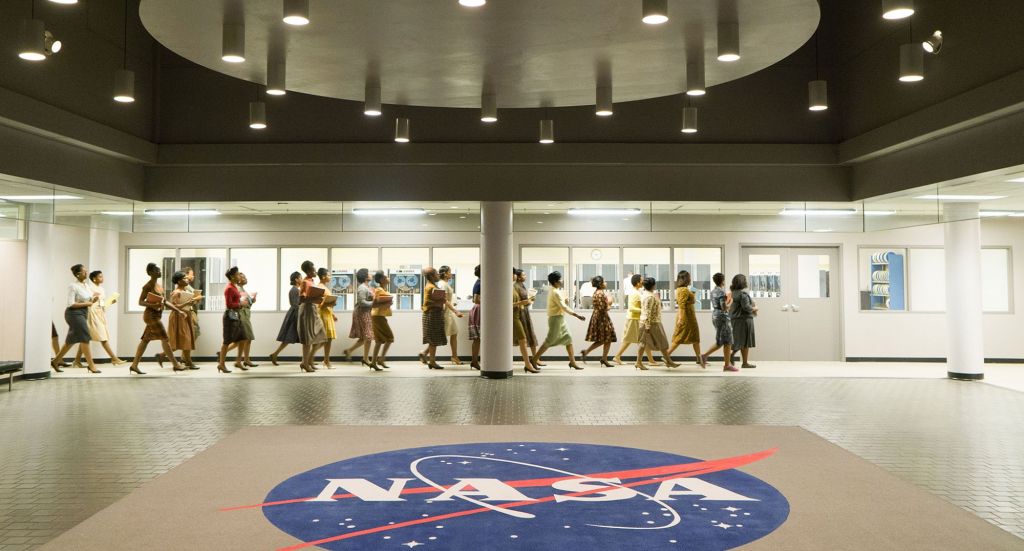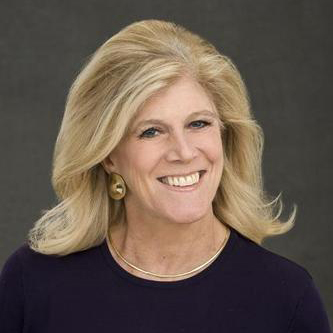
A scene from Hidden Figures, a new film out in theaters this month. (Photo courtesy of 20th Century Fox)
Ten seconds before John Glenn thundered into space atop a giant NASA firecracker in 1962 — to salvage America’s reputation as we raced the Russians to the moon — fellow Mercury astronaut Scott Carpenter radioed up to his colleague, “Godspeed, John Glenn.” It is one of the iconic sound bites in space history, a spur-of-the-moment sendoff that has always struck me as a perfect combination of the spiritual and scientific: humbly entreating whatever higher power might guarantee Glenn’s safety, while matter-of-factly acknowledging that only the rocket’s velocity — painstakingly calculated by teams of mathematicians to suit the machinery crafted by engineers — could finally, and safely, lift a human from the United States into orbit around Earth.
Some combination of the two clicked, making Glenn the first American to circle the planet and tipping the scales of the Cold War slightly westward. Finally, the US was competitive with its archenemy, the Soviet Union. Suddenly, President John F. Kennedy’s bold directive and full support for “landing a man on the moon and returning him safely to Earth” seemed within reach.
For more than half a century we have, properly, celebrated the grit and the know-how that led to that moment, and far beyond.
But now a new movie, Hidden Figures, adds critical depth and detail to the legend of The Right Stuff. Based on the book of the same name by Margot Lee Shetterly, the film tells the true story of the African-American women (“Negroes” or “coloreds,” in the parlance of the times) at NASA’s Langley Research Center in Virginia, whose brilliant scientific minds made the difference that got Glenn, and us, into space. They were called “computers,” meaning those who computed numbers — a word later assigned to machines that did it far faster. Back then, it was a human computer named Katherine G. Johnson (played by Taraji P. Henson in the movie) who crunched the numbers to determine the trajectory of John Glenn’s pioneering orbit.

A scene from Hidden Figures, a new film out in theaters this month. (Photo courtesy of 20th Century Fox)
Her little-known story, like that of the other women, is a rare glimpse into the complicated mosaic of American life that is at once thrilling and disturbing. Hidden Figures celebrates their talent and patience in a world of racially segregated schools, coffee pots and toilets. A world where sexism kept women of all colors out of the board room and the cockpit. Through it all, what sustained these women — along with church, family and their BFF bond — was their commitment to science, to facts, to proven principles. Even in the swiftly flowing stream of constantly updated times and coordinates for launch and landing, they trusted the numbers, and over time, their peers trusted them. And that, ladies and gentlemen, is how we beat the Russians to the moon.
What a difference five decades makes.
Today, with Russia no longer the enemy of the incoming Republican administration; with threats that science will no longer be the backbone of crucial national policies; with truth a missing player in the public discourse; with all of that, the promise and inspiration portrayed in Hidden Figures is a fleeting memory at best.
Don’t get me wrong. It’s only a movie, and a feel-good movie at that. The ugliest aspects of the emerging struggle for civil rights are merely hinted at, and except for Johnson and two other “colored computers” — Dorothy Vaughan (played by Octavia Spencer) and Mary Jackson (played by Janelle Monáe) — most of the characters are two-dimensional support players designed to highlight the frustrations and perseverance of the stars. But movies, unlike presidential campaigns or transition teams, don’t have to get every fact right to make their points. And while I’d never want to return to the cultural intransigence of early 1960s America, I sure do miss the universal acceptance of established science. Never once is it compromised as the drama unfolds. Never once does anyone suggest she or he doesn’t “believe” in, say, the atom.
The movie recalls a time when leadership meant inspiring Americans to reach for the stars rather than wallowing in hatred. When science was revered rather than vilified. When a satirical article about the incoming president repealing the law of gravity would have left readers scratching their heads rather than groaning in resignation.
It was reason and order that got us to the moon — not the mockery and chaos that swirls around the current president-elect like the cloud of dust constantly traveling with the character Pigpen in Peanuts. “We must as a nation be more unpredictable,” he declared back in April. And he has since proceeded to destabilize everything from our relations with China to his own outrageous campaign promises. In an attempt to understand this sharp detour from sanity, I actually checked with some mathematician friends to see if the principle of chaos theory might shed any light on his proudly erratic behavior. They found it an interesting exercise, but concluded that even chaos theory is based on actual systems, which have yet to be evident in the emissions from Trump Tower. Or, as The Washington Post’s Dana Milbank put it, “The widespread chaos suggests Trump isn’t signaling new policies as much as he’s winging it. His unpredictability is not a theory. It’s the absence of one.”
Which is about as far from the NASA of the Apollo program as exists in politics today.
During the presidential campaign neither Hillary Clinton nor Donald Trump said much of anything about plans for human spaceflight. Rocket science was neither practiced nor discussed. And except for a few stray comments from a Trump adviser indicating that NASA’s long commitment to Earth observations (a vital component of climate science, which many of his associates say they don’t “believe” in, as if you can pick and choose your favorite scientific theorem) might switch to deep-space human exploration, there are no specifics. Humans have not trod lunar soil since 1972. Do we return? If so, when? Do we head for Mars? If so, how? Space travel requires vehicles, which also need budgets. And those pesky Russians whom we beat back in the ’60s and ’70s? They provide our only ride to the International Space Station right now. And they’ve clearly improved their computer skills.
So what’s our next step out there?
And where’s the JFK to lead us?
And who’s the next John Glenn waiting in the wings to take flight for us all?
I do not mean to suggest that courage in a spacesuit automatically translates into sainthood. Glenn wasn’t perfect, and his journey into orbit didn’t give him a free ride for life. In 1984 I covered his disastrous run for president, a brief encounter with hero-worshipping fans who wanted to see him, not vote for him. One local official in the South even managed to mangle his heroic resumé, introducing Glenn this way: “Someone who was the first man on the moon has to have his feet on the ground.”
Glenn pulled out of the primary campaign shortly afterward and returned to the US Senate, where he served for four terms. “I wanted to run for president in the worst way,” he said much later, with characteristic good humor. “And I did.”
Still, he remains a pioneering idol for all the right reasons: his boldness, his determination, his patriotism. And his generosity of spirit. According to the movie, Glenn was the gentleman who went out of his way to greet Katherine Johnson and her colleagues on a visit to Langley. He understood that even when you wear a silver jumpsuit, you don’t get anywhere alone.
When he died earlier this month at the age of 95, he was the last of the original Mercury 7 astronauts to leave Earth for good. We mourn the loss of the man, his colleagues and some of the finer values of a less complicated era. So once again Godspeed, John Glenn. We owe him, and the women and men who made his work possible, a lifetime of gratitude.
And we can only hope that the kind of leaders who inspire Americans to soar will someday return to power.




